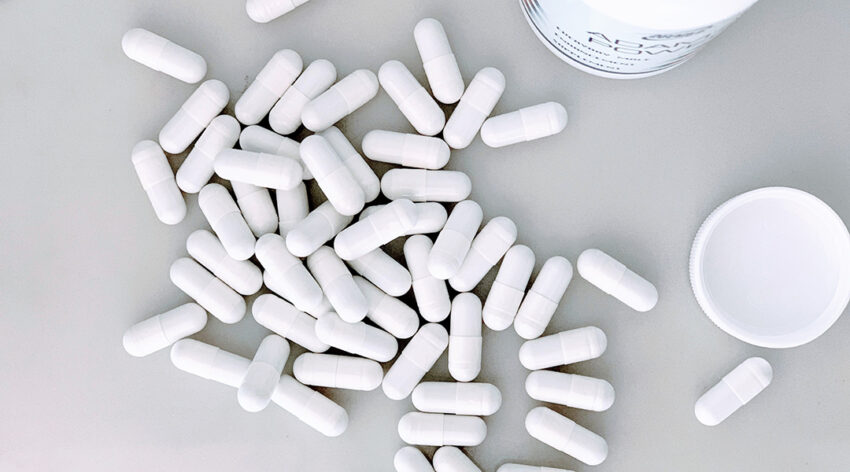Self-propelling microparticles enhance the dissolution of drugs in the stomach, achieving better bioavailability without the side effects of high dosing.
The majority of drugs we take are administered orally, and while this route is easy for patients, safe, and effective, there are many hurdles to overcome before a drug molecule can be delivered to a desired organ or location in the body. This is not always a bad thing and your body does a fairly good job at keeping foreign molecules and parasites out. However, ensuring drugs are absorbed at levels high enough to elicit a desired therapeutic outcome can be challenging.
One of the main parameters to assess drug performance is bioavailability, which is defined as the fraction of dosed drug that reaches systemic circulation. Achieving high bioavailability depends strongly on drug solubility, stability in the stomach, and its absorption in the GI tract, among other factors. One way around this is high dosing, but this can be dangerous and result in undesired side effects. Needless to say, efficient absorption through this route is often difficult to achieve.
From modifying the structure of drug molecules to developing sophisticated formulation systems, researchers are exploring new and innovative ways to safely enhancing drug bioavailability. In a recent study published in Advanced Science, a collaborative team of researchers led by Professors Liangfang Zhang and Joseph Wang from the University of California San Diego report the development of a unique microstirring pill platform to enhanced drug uptake and bioavailability.
“For over a decade we have been working on using micromotor-based active transport to improve the delivery of drugs,” said Wang in an email to ASN. “Our recent efforts have been aimed at bridging the field of microrobots with the pharmaceutical industry. Our goal has been to greatly increase the bioavailability of oral drugs by incorporating a built-in stirring capability into traditional drug tablets.”
To accomplish this, Wang, an expert in the field of microrobotics, reached out to Zhang who is himself an expert in drug design and delivery. They hypothesize that including chemically-powered microstirrers into a pharmaceutical pill could enhance the drug dissolution and dispersion in the stomach, leading to faster absorption and increased bioavailability.
Now before we go further, to perhaps calm any misapprehensions, try to remove any images of a pill whirring around your stomach from your mind. The “smart pill” platform developed in the current study is much more elegant, subtle, and, of course, safer than that. “Similar to conventional oral pills, the self-stirring pills cause no damage to the stomach,” said Wang.
Zhang and Wang’s pill contains embedded “microengines” called Janus microparticles made from 25-µm Mg microparticles that were partially coated with a thin layer of titanium dioxide. The fabrication process leaves a small opening in the particle’s structure through which microbubbles generated via an internal chemical reaction can exit and shoot the microparticle around.
“Embedding microscopic stirrers into a pill matrix offers significantly faster pill disintegration and dissolution,” explained Wang. “Since the encapsulated drugs and microstirrers are decoupled, the drug loading is not affected or compromised by the microstirrer.”
In vivo studies using animal models demonstrated the enhanced pills greatly improved the absorption and bioavailability of aspirin, both immediately post administration and at longer time scales. “Considering [these] encouraging results, we anticipate a high likelihood of clinical translation of the microstirring pill technology,” said Wang.
“In principal, the microstirrer pill can be broadly applicable for numerous types of oral drugs. The concept thus has a very high translation potential: adding only one excipient material (the synthetic microstirrers) into the pill formulation without changing anything else.”
Reference: Rodolfo Mundaca-Uribe, et al., A Microstirring Pill Enhances Bioavailability of Orally Administered Drugs, Advanced Science (2021). DOI: 10.1002/advs.202100389

